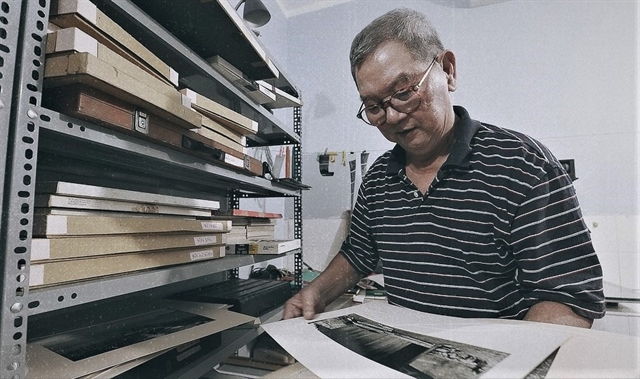[ad_1]

HÀ NỘI — Cinematographer and People’s Artist Nguyễn Hữu Tuấn has released his first photo book Tiếng Gọi Đò (Ferry Boats Story), which features photos of ferries in rural areas throughout the country.
Tuấn is the man behind the camera in many classic Vietnamese films such as Thương Nhớ Đồng Quê (Love For the Countryside), Hy Vọng Cuối Cùng (Last hope) and Bến Không Chồng (Wharf of Unmarried Women).
Over decades of searching for settings for his films, Tuấn had a chance to travel to many places and developed an interest in taking photos of the country’s many local ferries. His photos not only capture beautiful landscapes but also the stories of many different people.
After many years of photography, he has compiled the first book Tiếng Gọi Đò, which evokes various emotions toward the different rivers and old ferries he has visited on his travels.
The book is printed and distributed by Thế Giới (World) Publisher in coordination with Omega Plus. The 147-page book includes 85 photos selected from thousands of photos taken from 1987 to 2018. It has been translated into English by the author in the hope that foreign readers will also enjoy what he has to say.
All the photos are printed in black and white, evoking a nostalgic atmosphere.
Notes in the book are mostly the author’s, detailing where and when the photo was taken.
In the course of his work, Tuấn travelled to many popular harbours in the north, such as Đông Trù (Hà Nội), Nương Wharf (Bắc Giang Province) and Vân Wharf (Bắc Ninh Province). In some photos, the author tries to explain the stories he has heard while riding the ferries.

Speaking at the book launch, the artist said he wanted to introduce the photos he had taken and preserved over many decades.
“The readers themselves can draw the message I want to convey. I only have one wish that one day when ferries have become a thing of the past, my book will become a reference for our descendants,” Tuấn said.
A special feature of Tuấn’s photos is their focus on women. More than 80 per cent of his photos taken on the ferries capture images of women in rural areas.
“I always find them beautiful. I love these people and the country that gave birth to such people. Having travelled through many rural areas of Việt Nam taking pictures of people and villages, I found that there is no place more beautiful than the country because of these simple people,” Tuấn said.
Researcher and artist Phan Cẩm Thượng said: “The photos were taken from the 1980s. That was when the Vietnamese society changed to the đổi mới (renewal) period, with the appearance of various new ferries and bridges. These photos of ferries and boats revive our memories of the past.”
According to Thượng, the black and white photos capture typical moments in life.
When life changes, certain activities and scenes disappear, and photography becomes a historical witness, he added.
Cinematographer Nguyễn Hữu Tuấn was born in 1949 in Hà Nội. He won the award for cinematography at the 6th Vietnam Film Festival in 1983 with his two works, Hy Vọng Cuối Cùng (1981) and Thị Xã Trong Tầm Tay (1983). — VNS
[ad_2]
Source link
